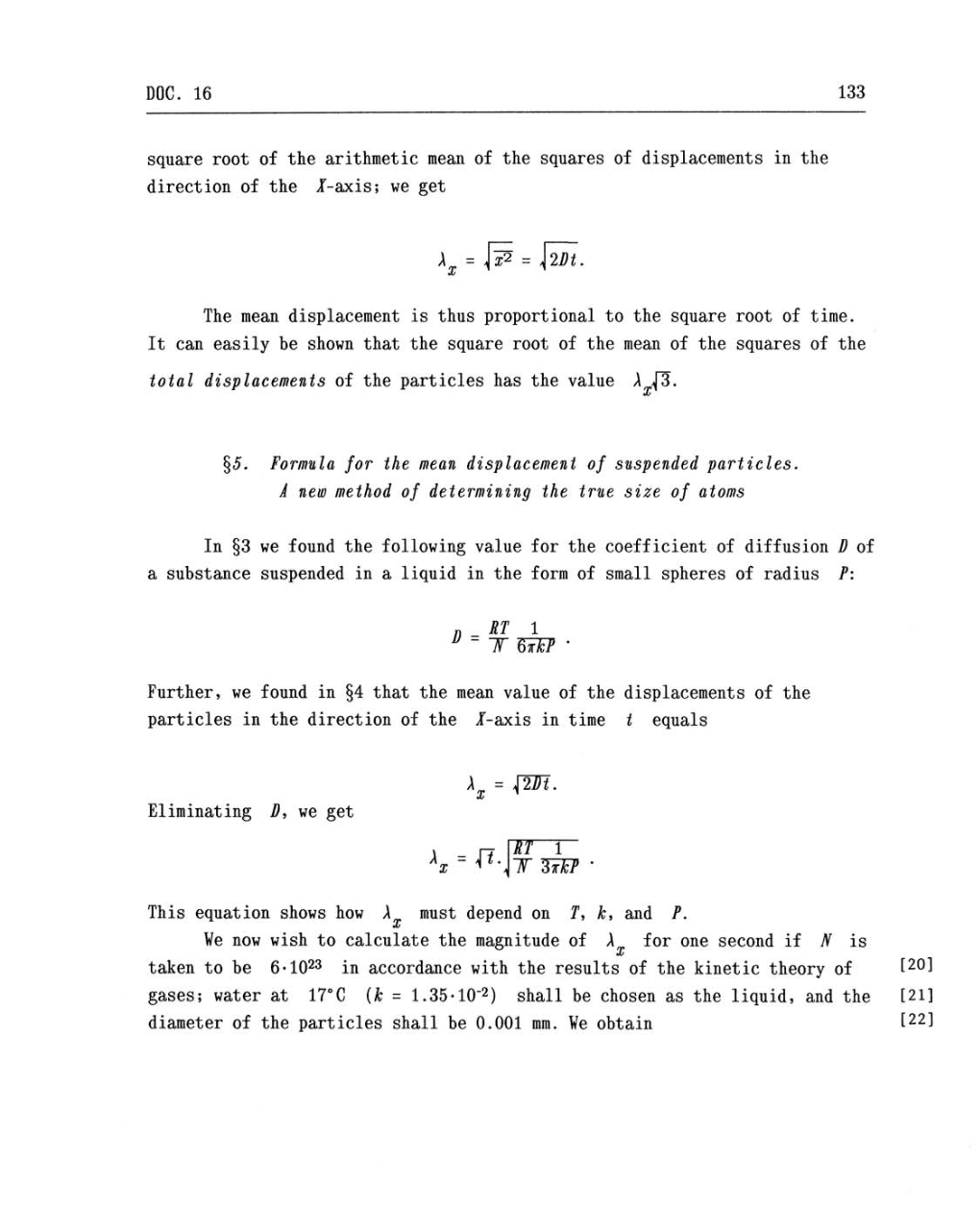DOC.
16
133
square
root
of the arithmetic
mean
of
the
squares
of
displacements
in the
direction of the X-axis;
we
get
The
mean
displacement
is thus
proportional
to
the
square
root of
time.
It
can
easily be
shown
that the
square
root of
the
mean
of the
squares
of
the
total
displacements
of the
particles
has
the value yx3.
§5.
Formula
for
the
mean
displacement of suspended
particles.
A
new
method
of determining
the true size
of
atoms
In
§3 we
found
the
following
value for the coefficient of diffusion
D
of
a
substance
suspended
in
a
liquid in the
form
of small
spheres
of radius
P:
n
_R1
1
ü
~
T
'
Further,
we
found
in
§4
that the
mean
value of the
displacements
of the
particles in the direction of the X-axis in time
t equals
=
|2Jt.
Eliminating
D,
we
get
.
_
n
ykt
r~
Ax - *
U\T
•
This
equation
shows
how
yx
must
depend
on T,
k,
and
P.
We now
wish
to
calculate the
magnitude
of
yX
for
one
second
if
N
is
taken
to be 6.1023 in
accordance with the results of the kinetic
theory
of [20]
gases;
water
at 17°C
(k
=
1.35.10-2)
shall
be
chosen
as
the
liquid,
and
the
[21]
diameter of the particles shall
be 0.001
mm.
We
obtain
[22]
